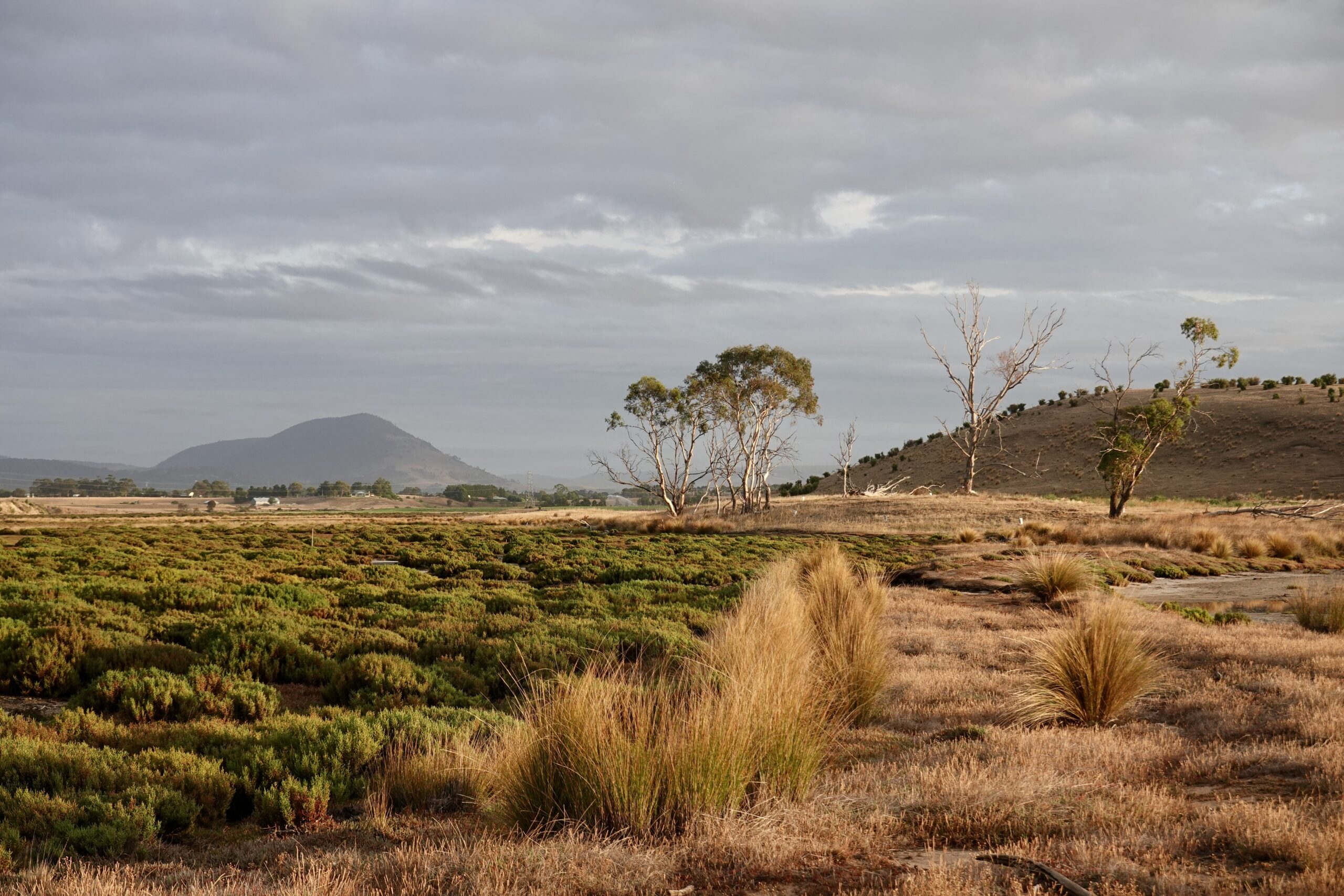-MEDIA RELEASE-
NRM South is marking the successful completion of its groundbreaking Blue Carbon Ecosystem Restoration project—returning vital tidal flows, boosting biodiversity, and setting a national benchmark for wetland restoration and carbon capture in Tasmania’s Pitt Water-Orielton Lagoon.
Running since 2022, this has been the largest wetland restoration project to ever have been undertaken in Tasmania. Through funding support from the Australian Government’s Blue Carbon Ecosystem Restoration Grants, NRM South has overseen a suite of on-ground efforts that has re-established natural tidal flows, and has seen a consequent burst of plant, bird and marine life to this internationally significant saltmarsh wetland.
Wetland systems such as at Richmond Park Estate, which sits within Pitt Water-Orielton Lagoon, offers one of the most significant opportunities to capture ‘blue’ carbon and return it into the earth’s systems, explained Jennifer Hemer, Program Manager for NRM South’s Water Program.
‘When we take on projects of this scale, we can see the return of ecological services. This site sits at the tail end of a network of agricultural properties, so restoring its capacity to absorb and process the excess nutrients coming through the landscape brings with it a lot of environmental benefits’, Jennifer said.
Richmond Park Estate owner, Will Eddington, has seen these benefits firsthand and his enthusiasm for and commitment to this process has been critical to its success.
‘In the short time we’ve put the project into action, I’m seeing significant changes,’ said Will. ‘I see an opportunity for our future developments in business to tell this story. Add to that the benefit to fish breeding stocks, coastal bird life and carbon sequestration, and to me it’s a bit of a no-brainer to go through with the project,’ he added.
NRM South’s Blue Carbon Ecosystem Restoration project was one of five projects to receive funding under the Australian Government’s Blue Carbon Ecosystem Restoration Grants, and the data collected as part of this project are providing important, measurable insights into the benefits of wetland restoration.
Project partners Blue Conservation Services (BCS) and the University of Tasmania (UTAS) have been working with NRM South to monitor changes, to build a better understanding about the flow-on benefits of project works to the broader landscape.
‘The great thing about this project is that we’re looking at the ecosystem as a whole, and trying to understand how it’s responding to the restoration work’, said Dr Vishnu Prahalad from UTAS. ‘We’re seeing a return of fish, saltmarsh vegetation showing strong signs of recovery, and the return of more birds. It’s also an important flood soak, storing water that might otherwise impact on people’s homes.’
This project also brings positive impacts for the economy and community. Improving fish stocks supports commercial and recreational fisheries, storing atmospheric carbon and reducing the potential impacts of floods on homes and infrastructure are all benefits that come with a dollar value.
This ‘Environmental Economic Accounting’ is a combination of conventional environmental monitoring and accounting, explained Dr Victor Shelamoff, company director from BCS.
‘NRM South’s Blue Carbon project has improved the extent and condition of saltmarsh and allowed for the return of a lot of species’, said Victor. ‘We’d expect we may be able to increase fisheries productivity in surrounding rivers, sequester more carbon and see a healthier and thriving ecosystem’.
With the completion of this project, NRM South has once again delivered a successful partnership project, achieving landscape-scale benefits within one of southern Tasmania’s most important wetland regions, and that will continue to deliver positive impacts in the years to come. More than just a conservation success story, this project is a demonstration of how strategic restoration can tackle climate change, enhance biodiversity, and support future economic opportunities.
To learn more about the project and view the Blue Carbon project feature video, click here.
-ENDS-
